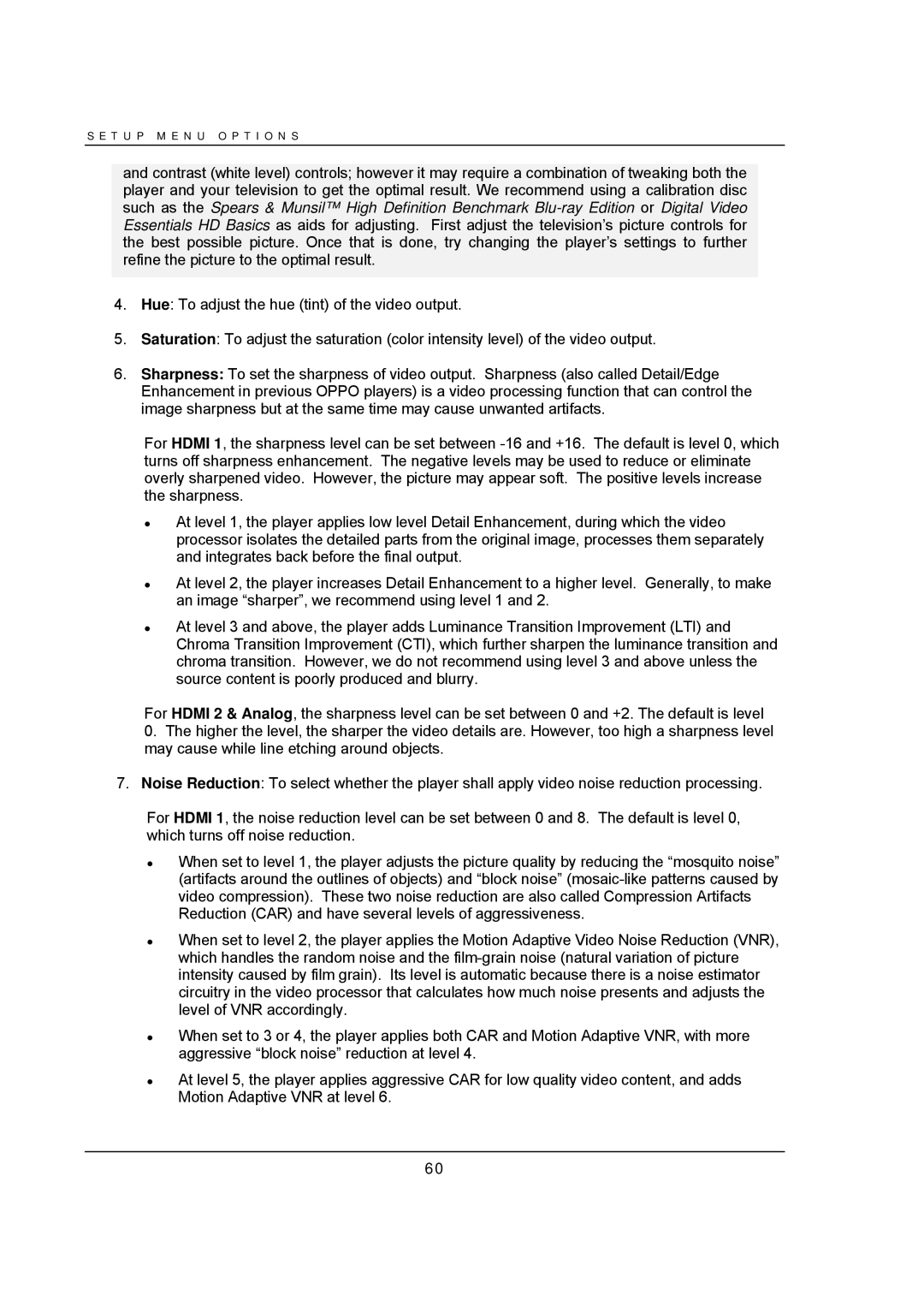
S E T U P M E N U O P T I O N S
and contrast (white level) controls; however it may require a combination of tweaking both the player and your television to get the optimal result. We recommend using a calibration disc such as the Spears & Munsil™ High Definition Benchmark
4.Hue: To adjust the hue (tint) of the video output.
5.Saturation: To adjust the saturation (color intensity level) of the video output.
6.Sharpness: To set the sharpness of video output. Sharpness (also called Detail/Edge Enhancement in previous OPPO players) is a video processing function that can control the image sharpness but at the same time may cause unwanted artifacts.
For HDMI 1, the sharpness level can be set between
At level 1, the player applies low level Detail Enhancement, during which the video processor isolates the detailed parts from the original image, processes them separately and integrates back before the final output.
At level 2, the player increases Detail Enhancement to a higher level. Generally, to make an image “sharper”, we recommend using level 1 and 2.
At level 3 and above, the player adds Luminance Transition Improvement (LTI) and Chroma Transition Improvement (CTI), which further sharpen the luminance transition and chroma transition. However, we do not recommend using level 3 and above unless the source content is poorly produced and blurry.
For HDMI 2 & Analog, the sharpness level can be set between 0 and +2. The default is level
0.The higher the level, the sharper the video details are. However, too high a sharpness level may cause while line etching around objects.
7.Noise Reduction: To select whether the player shall apply video noise reduction processing.
For HDMI 1, the noise reduction level can be set between 0 and 8. The default is level 0, which turns off noise reduction.
When set to level 1, the player adjusts the picture quality by reducing the “mosquito noise” (artifacts around the outlines of objects) and “block noise”
When set to level 2, the player applies the Motion Adaptive Video Noise Reduction (VNR), which handles the random noise and the
When set to 3 or 4, the player applies both CAR and Motion Adaptive VNR, with more aggressive “block noise” reduction at level 4.
At level 5, the player applies aggressive CAR for low quality video content, and adds Motion Adaptive VNR at level 6.
60
